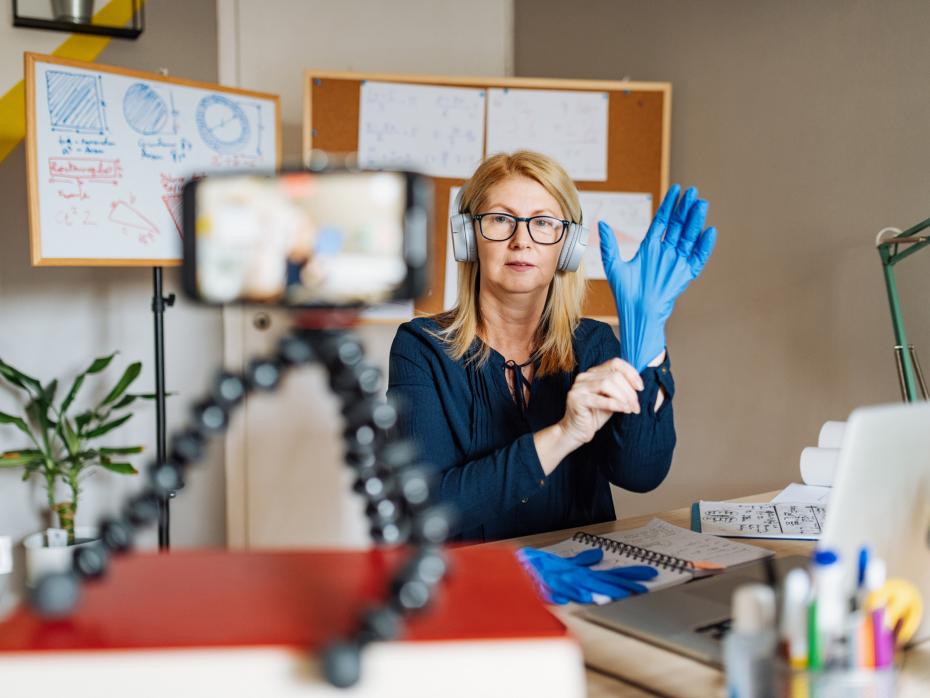Donald Trump may have given life to the phrase “fake news” in order to undermine the credibility of stories that do not conform to his world view, but the phrase has wider use. It reflects the explosion in recent years of online material, where stories can emerge and become mainstream without factual validity. This is as true for many common claims about online teaching and learning as it is for American politics.
At Educational Developers Thinking Allowed (EDTA) – an interactive online resource primarily for educational developers in higher education – we asked fellow educators in Canada and the UK to identify their most loathed “fake news” relating to teaching and learning in higher education.
- Fake news, educated views and how-tos: social media for teaching and research
- Collection: Teaching critical thinking
- ‘Well…what do you think?’ Responding to challenging questions in the moment
Here are some of the most common unevidenced claims that have taken root:
Fake news 1: ‘Students have different learning styles’
Theories about “learning styles” to categorise students and their optimum learning environment remain prevalent despite very little evidence to support them. The predominant theories include verbal versus auditory learners, left-brainers versus right-brainers and globalists versus analysts. A 2004 critique of 13 of the most popular of these learning style theories, by Frank Coffield of the Institute of Education, found that all but one lacked sufficient evidence to support the claims.
While it may be helpful to recognise that people are different and learn in diverse ways, it is less helpful to label an individual as having a fixed, specific learning style. Teaching that incorporates multiple means of communication and activity – such as reading, writing, speaking, listening, creating and applying – is likely to benefit all learners regardless of their “style”.
Fake news 2: ‘Technology solves everything’
There is a growing assumption that bad teaching can be fixed with the right gadget and that “innovation” simply involves transferring courses to the digital sphere. Bad teaching is bad teaching whatever the mode of communication. Technology can only improve student learning in the context of a well-constructed class.
There is a great deal of emphasis on innovation in education, particularly since Covid-19 forced almost all teaching online. But putting a lecture online or using a chat room is not by default innovative. What is new for one person is, quite often, old hat for someone else. Students do not need quirks and surprises in order to learn. They do need the experiences to be well structured, thought through and efficient in the use of their time. Don’t require them to learn some new software in order to complete a low-stakes or upgraded exercise. Constructive alignment of outcomes, activities and assessment should be at the heart of all our teaching, bringing in technological solutions only where they are appropriate and serve a clear purpose. Equally there is need to cater to digital literacies that vary greatly among students.
Fake news 3: ‘Traditional lectures are good and the default mode for teaching’
While lectures may be the default mode of teaching for some instructors, it should not be the default mode for all teaching. Traditional lecturing started in the medieval period before the accessibility of books brought about by the invention of the printing press. A “lecturer” lectured to a group of learners because this was the most efficient way to share information. Clearly, we have progressed well beyond this and information is one thing we have in abundance. Knowing what to do with that knowledge, how to evaluate and apply it, is far more important than offering mere access.
As long ago as 1972, researcher and author Donald Bligh asked, “What’s the use of lectures?” in his book of the same name, and his arguments are still worth consideration. Lectures have their place in conveying facts or an argument but if we want students to remember and understand, let alone apply the learning, there must be some form of interaction lacking in the traditional format.
Educators should not try to replicate traditional lectures online but adopt new, more effective modes of digital teaching such as short videos, pair and group work, reflection, quizzes and discussion.
Fake news 4: ‘Assessment always drives learning’
While most would agree that learning without assessment is difficult to quantify, some would also argue that giving precedence to assessment over the learning experience can skew student and teacher behaviour. This can lead to teaching to the test, where the learning itself is secondary to the student’s ability to get a good grade.
As with so much in life, balance is important.
Selecting authentic assessment for online teaching is not so different from authentic assessment in face-to-face teaching. Assessments that build on each other throughout the course help students see their development with the bonus of discouraging cheating. Helping students see the connections between what you ask them to do for grades and the purpose of the learning encourages engagement. For example, in one course, Celia replaced a 1,000-word assessment with a guide for teachers, which required students to produce informative posters that were shared with the wider community through the teaching support centre. These posters had a far wider audience than the written assessment would have done and thus more real-world relevance.
Celia Popovic is an associate professor in the Faculty of Education at York University, Toronto, and Fiona Smart is head of teaching and learning at Edinburgh Napier University.
If you would like advice and insight from academics and university staff delivered direct to your inbox each week, sign up for the Campus newsletter.




comment